Getting around is probably one of the first lessons you should learn in Chinese if you’re going to travel within China. This article will introduce some basic vocabulary and phrases to use when taking public transport. You can also take a look at our previous article all about asking for directions and location in Chinese to complete the lesson.
Modes of Transport in Chinese
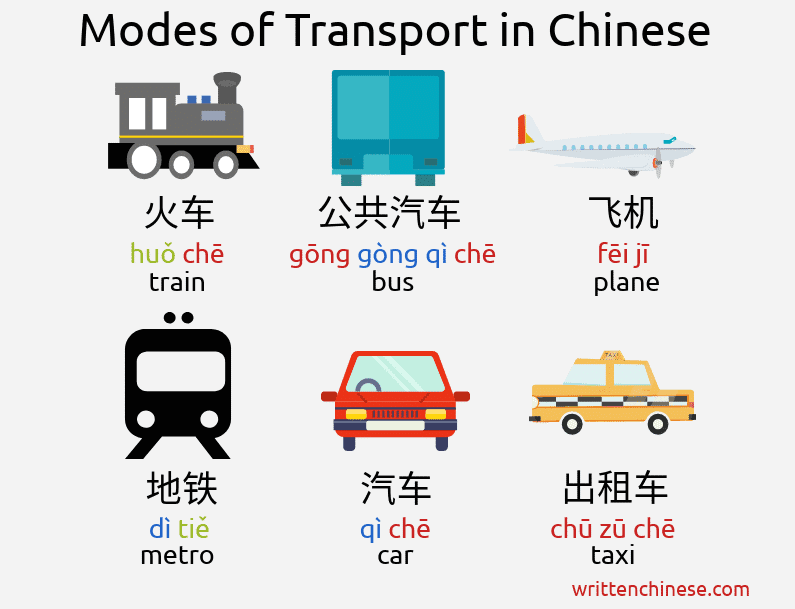
To say ‘take’ or ‘to go by’ a mode of transport, for the most part, the pattern is 坐 (zuò) + transportation. 坐 (zuò) means to sit or take transportation:
坐车 (zuò chē) – to go by car
出租车 (chū zū chē) – taxi
火车 (huǒ chē) – train
地铁 (dì tiě) – metro
飞机 (fēi jī) – plane
公共汽车 (gōng gòng qì chē) – bus
公交车 (gōng jiāo chē) is now commonly used in spoken Chinese.
The noun for car is 汽车 (qì chē), but when used after a verb, as in the example above or 买车 (mǎi chē) ‘to buy a car’, we remove the 汽 (qì), meaning ‘steam’.
You can also use the term 打车 (dǎ chē) when talking about taking a taxi.
To say ‘ride’, we use the character 骑 (qí) instead of 坐 (zuò).
骑单车 (qí dān chē) – ride a bike
摩托车 (mó tuō chē) – motorbike
马 (mǎ) – horse
Bicycle can also be 自行车 (zì xíng chē).
If you want to talk about going somewhere on foot, then the verb 走 (zǒu) is used.
走路 (zǒu lù) – to walk
Getting on or into a vehicle, use the phrase:
上 (shàng) + vehicle
上车 (shàng chē) – Get in the vehicle
Getting out of a vehicle uses the expression:
下 (xià) + vehicle
下地铁 (xià dì tiě) – Get off the metro
These can also be used to board or disembark a flight.
上飞机 (shàng fēi jī) – Board a flight
下飞机 (xià fēi jī) – Disembark a flight
Using Public Transportation
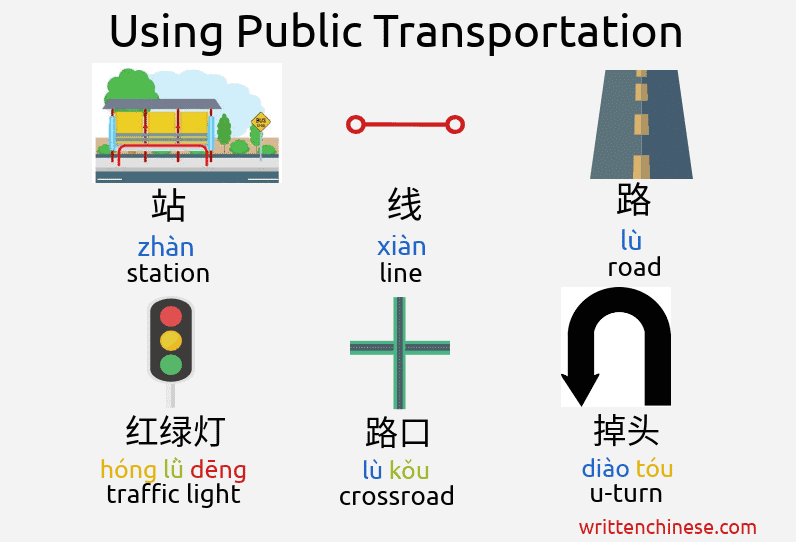
The following list contains useful words to know when taking public transportation:
站 (zhàn) / 车站 (chē zhàn) – station/stop
路 (lù) – road/route
线 (xiàn) – line (metro line)
路口 (lù kǒu) – crossroads
红绿灯 (hóng lǜ dēng) – traffic lights
掉头 (diào tóu) – U-turn
We talked more about asking where a place is in the article Expressing Location and Directions in Chinese, but below are some instructions on taking public transport in Chinese.
从这里到景田图书馆坐几路车?(cóng zhè lǐ dào jǐng tián tú shū guǎn zuò jǐ lù chē) – Which route do I take from here to Jingtian library?
路 (lù) is used in this instance to mean the ‘number’ or ‘route of a bus.

要坐几站?(yào zuò jǐ zhàn) – How many stops do I go?
要 (yào) does not mean ‘want’, in this sentence, but ‘need’ or ‘take’.
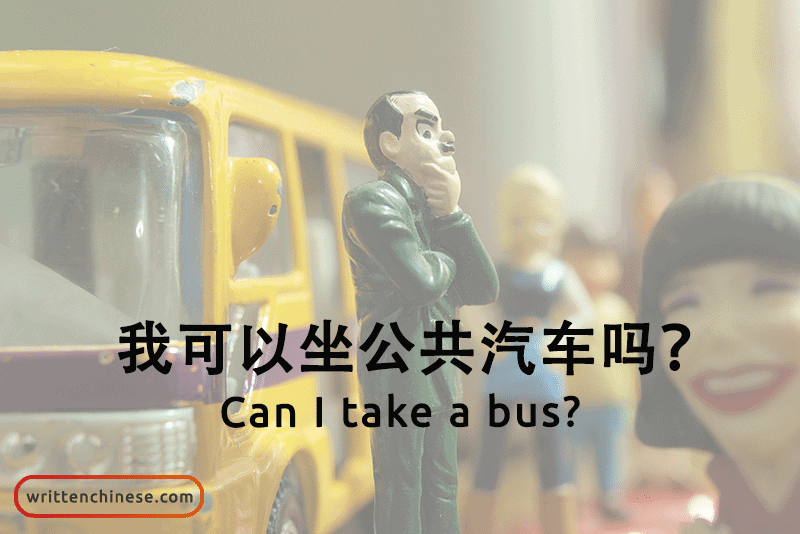
我可以坐公共汽车吗?(wǒ kě yǐ zuò gōng gòng qì chē ma?) – Can I take a bus?
你坐地铁一号线。(nǐ zuò dì tiě yī hào xiàn) – Take metro line one.
号 (hào) is the measure word for numbers in Chinese.
For example:
电话号码 (diàn huà hào mǎ) – Telephone number
九号 (jiǔ hào) – The 9th (of the month)
Buying Tickets in Chinese
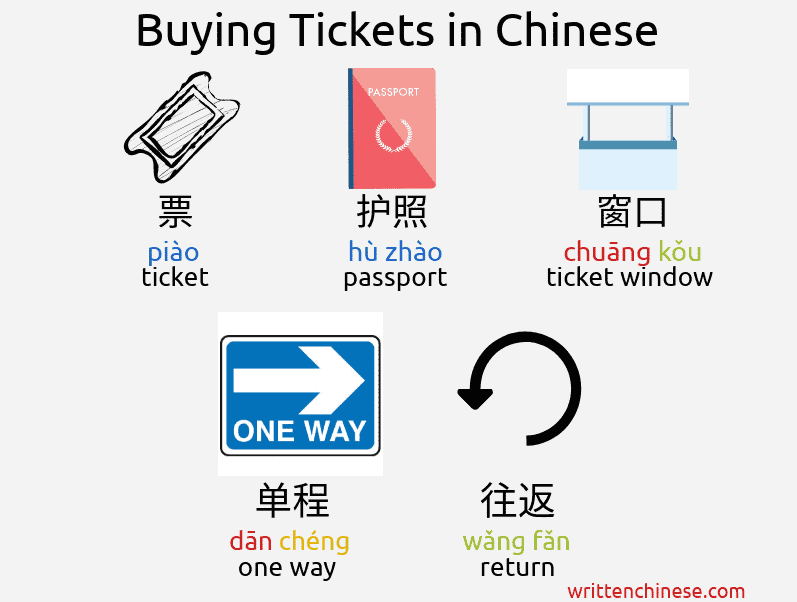
票 (piào) – ticket
护照 (hù zhào) – passport
窗口 (chuāng kǒu) – ticket window
单程 (dān chéng) – one way
往返 (wǎng fǎn) – return
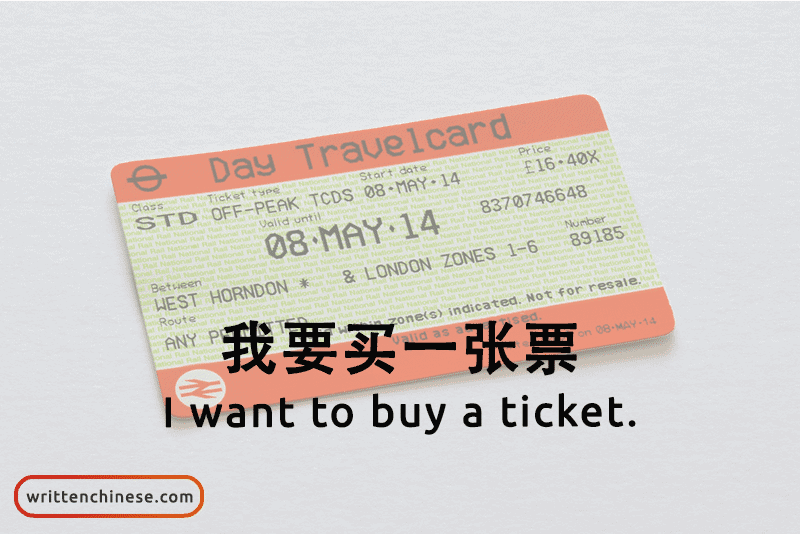
我要买一张票。(wǒ yào mǎi yī zhāng piào) – I want to buy a ticket.
张 (zhāng) is the measure word for flat objects, such as paper, tickets, and tissue.
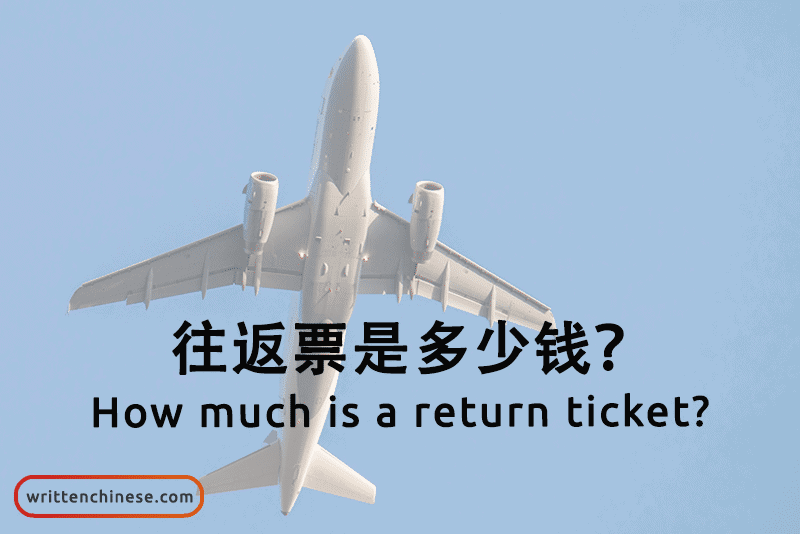
往返票是多少钱?(wǎng fǎn piào shì duō shao qián) – How much is a return ticket?
我要订单程票。(wǒ yào dìng dān chéng piào) – I want to book a one-way ticket.
Taking a Flight in Chinese
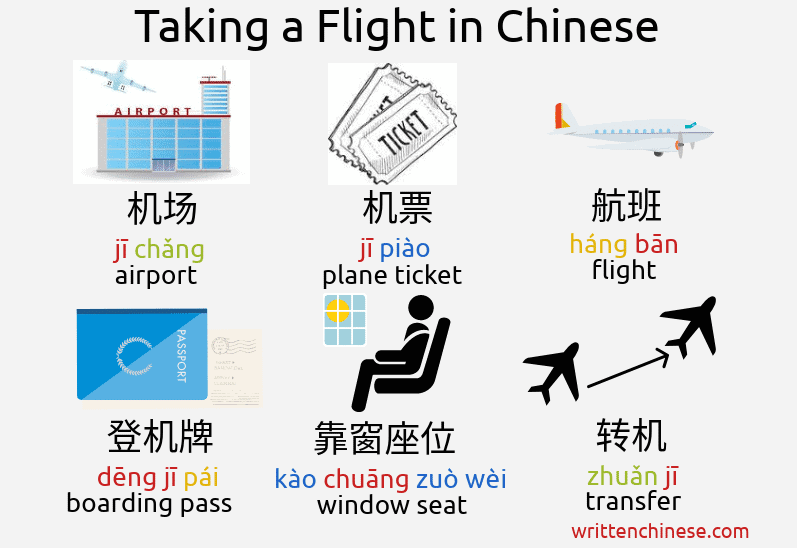
机场 (jī chǎng) – Airport
机票 (jī piào) – Flight ticket
航班 (háng bān) – Flight
登机牌 (dēng jī pái) – Boarding pass
转机 (zhuǎn jī) – Transfer
登机口 (dēng jī kǒu) – Departure gate
靠走廊 (kào zǒu láng) – Aisle seat
靠窗座位 (kào chuāng zuò wèi) – Window seat
海关 (hǎi guān) – Customs
错过航班 (cuò guò háng bān) – Missed flight
航班延误了。(háng bān yán wu le) – Delayed flight.
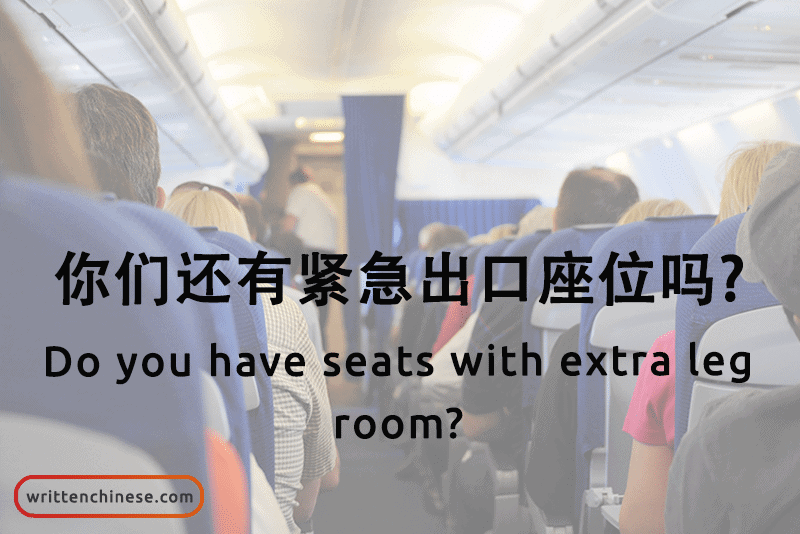
你们还有紧急出口座位吗?(nǐ men hái yǒu jǐn jí chū kǒu zuò wèi ma?) Do you have seats with extra leg room? (Literal: Do you have a seat next to the emergency exit?)
Exercises
Post your homework below, and we will check it for you. The answers are in the comments section of Because, If and Not Only: Chinese Conjunctions Part 2.
1. Translate the following:
a. How do you go to work every day?
b. By metro.
2: Excuse me, are there any window seats left?

